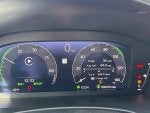I have a 2025 civic sport touring hybrid that I purchased on 11/19 (just shy of two weeks ago). Since then I am already going to have to fill up a second time.
it says my average fuel is 44.4mpg but I have only driven 350 miles on the second full tank.
I have also noticed it sometimes takes quite awhile for ev to kick in even in instances when i have full charge and drive steady at 55mph.
i live in California, do mostly city driving with two trips on the highway at 75mph top speed for only 60 miles round trip. I also have been very conscious of my foot, making a concerted effort to drive steady and brake even.
I can clearly tell the readings are off but even if they were accurate id be averaging well under 40mpg which is no better than my 2007 corolla.
just need to know if im overly concerned and if possible, any explanation why filling up a few times increases mileage.
this is mt first new car and first hybrid so i am very inexperienced.
it says my average fuel is 44.4mpg but I have only driven 350 miles on the second full tank.
I have also noticed it sometimes takes quite awhile for ev to kick in even in instances when i have full charge and drive steady at 55mph.
i live in California, do mostly city driving with two trips on the highway at 75mph top speed for only 60 miles round trip. I also have been very conscious of my foot, making a concerted effort to drive steady and brake even.
I can clearly tell the readings are off but even if they were accurate id be averaging well under 40mpg which is no better than my 2007 corolla.
just need to know if im overly concerned and if possible, any explanation why filling up a few times increases mileage.
this is mt first new car and first hybrid so i am very inexperienced.







